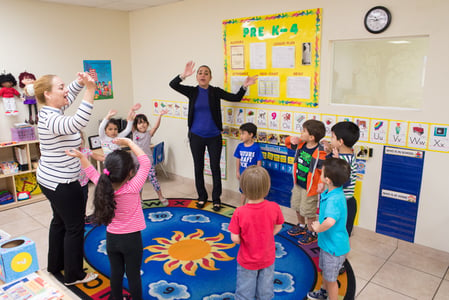

This blog post will be a little different than those you will typically find on the Teachstone blog. Instead of talking about domains, dimensions, QRIS systems, and the quality crisis facing our early childhood programs, I will focus on a health crisis facing our early childhood programs and the children who are enrolled in the classrooms—the growing rate of nonvaccination.
Today we are seeing an alarming trend of reduced vaccination rates across the country, particularly in our most affluent and educated communities. This is causing a reduction of the herd immunity. What is "herd immunity" you ask, and why is it important? Herd immunity is reached when a sufficient proportion of the population is immune to a particular infectious disease due to vaccination. When herd immunity rates are high, the chance of an infectious person crossing paths with a susceptible person is very low. Therefore the infectious person would not be able to spread the disease within the population. However, as more and more pockets of non-immunized people emerge, more outbreaks are inevitable, particularly with pertussis and measles.
In 2011, 49 states were below the herd immunity level for pertussis, more commonly know as whooping cough. This reduced immunization rate is due to misinformation in the popular press and online communities that incorrectly links childhood vaccinations, particularly the measles, mumps, and rubella (MMR) vaccine to autism.
Over the last two decades, extensive research studies have evaluated whether there is any link between childhood vaccinations and autism. Evidence from several national and international studies examining trends in vaccine use and changes in autism in children does not support such an association between vaccines and autism. In addition, a scientific review by the Institute of Medicine (IOM) concluded that "the evidence favors rejection of a causal relationship between thimerosal–containing vaccines and autism." The Centers for Disease Control (CDC) supports this conclusion that there is no relationship between vaccines and autism rates in children.
The results of this research are clear: Vaccines do not cause autism. Let me say this one more time—vaccines do not cause autism. All children and adults must be fully vaccinated to protect the health of the children within our communities.
This message is especially important to me as five years ago, when I sat down to work on my lecture for the autism course I was teaching (ironically on vaccinations), I noticed that my three-year old daughter had a peculiar cough. The next morning I took her to the doctor and after a few doctors examined her puzzled by the symptoms, one finally said, “What do you know about whooping cough?” I replied, “That it was eradicated in the 1950s.” His reply shocked me. “It was actually not eradicated but kept at bay by something called herd immunity, but today that herd immunity is not able to do its job due to lower immunization rates. Your daughter has whooping cough.” My daughter was one of the lucky ones. While she had 100 days of terrible coughing fits that kept her from sleeping and caused her to throw up each time she coughed, she was at an age that whooping cough was not life threatening. Many children under one year old have not been so lucky. In 2012, 20 children who died from whopping cough.
The Administration for Children and Families has asked those of us working in early childhood settings or in support of early childhood settings to assist with the dissemination of their Issue Brief on vaccines: Measles – What Early Childhood Programs Should Know. Please take a few minutes to read this issue brief and please share with parents, center directors, and community members.
We cannot allow this crisis to continue. It is our obligation to ensure everyone has the correct information about vaccinations. All children and adults should follow the CDC recommendations for vaccination to ensure the health and safety of our centers, classrooms, and children.
